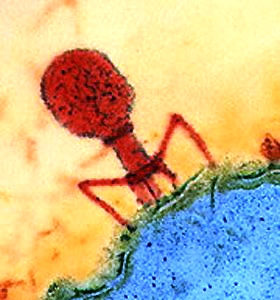Research Report – OPEN ACCESS
B. Swift from the department of Pathobiology and Population Sciences, Royal Veterinary College together with colleagues from the University of Nottingham and Moredun Research Institute report on a means of enhancing diagnostic sensitivity for MAP detection in blood samples by use of a bacteriophge to improve the efficiency of DNA extraction prior to performing PCR. This publication appears in the November issue of Microbial Biotechnology. PBD Biotech Ltd is the company commercializing the Actiphage® technology.

Summary
Here, we describe the development of a method that exploits bacteriophage D29 as a lysis agent for efficient DNA extraction from low numbers of mycobacterial cells. This method (Actiphage®) used in combination with PCR achieved rapid and sensitive (LOD ≤ 10 cell per ml) detection and identification of viable, pathogenic mycobacteria in blood samples within 6 h. We demonstrate that mycobacteriophage D29 can be used to detect a range of mycobacteria from clinical blood samples including both Mycobacterium tuberculosis complex and Mycobacterium avium subsp. paratuberculosis without the need for culture and confirms our earlier observations that a low-level bacteraemia is associated with these infections in cattle. In a study of M. bovis-infected cattle (n = 41), the sensitivity of the Actiphage® method was 95 % (95 % CI; 0.84–0.99) and specificity was 100 % (95% CI; 0.92–1). We further used Actiphage® to demonstrate viable Mycobacterium avium subsp. paratuberculosis is present in the blood of Johne’s infected cattle. This method provides a revolutionary new tool for the study of infections caused by these difficult to grow pathogens.
For more information contact:
Bob Lyons, GM/US, PBD Biotech, Pasadena, CA,
e: Bob@PBDBio.com p: 626 394 9771.
Comment: The diagnostic sensitivity of PCR assays is heavily dependent on the efficiency of methods to extract DNA from MAP with its thick, tough waxy cell wall. Using bacteriophages to lyse the MAP appears to be more efficient than chemical extraction methods and also allows detection of only live MAP cells since the phage will not bind to and then lyse dead MAP bacteria. Hopefully further studies by independent investigators will verify the enhanced diagnostic sensitivity of the Actiphage® system and the ability of this novel diagnostic assay to detect MAP in blood samples early in the course of a MAP infection.